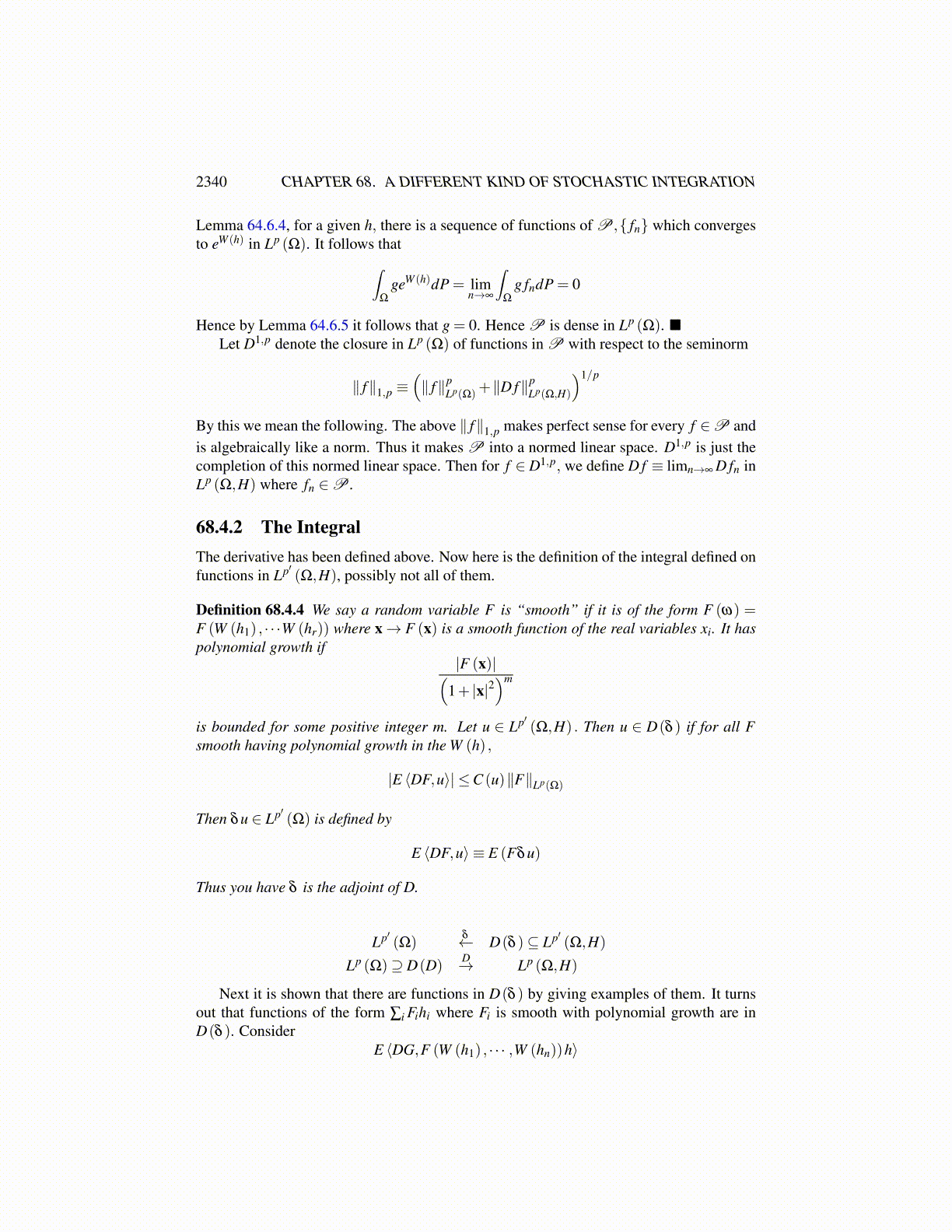
2340 CHAPTER 68. A DIFFERENT KIND OF STOCHASTIC INTEGRATION
Lemma 68.3.14 Let n be given. Then ∪p≤n{
Ip ( f ) : f ∈ Ep}
is dense in Pn = ⊕ni=0Hi.
Consequently, every f ∈ L2 (Ω,F ) may be written as an infinite sum
f =∞
∑k=1
ckIk (gk)
where gk ∈ Ek and it can also be assumed that gk is symmetric.
Proof: It only remains to verify that gk can be symmetric. However, this is obviousbecause if gk is replaced with g̃k the integral Ik is unchanged.
68.4 The Skorokhod IntegralThis integral allows for one to obtain a stochastic integral of functions which are notadapted. It is a generalization of the Ito integral. There is also a strange sort of deriva-tive which can be defined and the two are related in a natural way.
68.4.1 The DerivativeLet F : Rn→ R be smooth and have polynomial growth. Then consider
F (W (h1) , · · · ,W (hn))
where W is defined above. Recall that h ∈ H a separable real Hilbert space and W (h) ∈L2 (Ω,F ,P) where F = σ (W (h) ,h ∈ H). Also (W (h1) , · · · ,W (hn)) is multivariate nor-mal and E (W (g)W (h)) = (h,g)H .
Definition 68.4.1 In the above situation,
DF ≡n
∑k=1
DkF (W (h1) , · · · ,W (hn))hk
Thus from Lemma 64.6.4, F, DkF are in Lp (Ω) and so DF is in Lp (Ω;H) for every p.
First it is good to consider whether DF is well defined.
Lemma 68.4.2 The derivative is well defined. Also, if F (W (h1) , · · · ,W (hn)) = 0 for{h1, · · · ,hn} independent, then for all x,F (x) = 0.
Proof: SupposeF (W (h1) , · · · ,W (hn)) = 0.
Is it true that DF = 0? Let λ be the distribution measure of (W (h1) , · · · ,W (hn))≡W(h) .Then the above requires that for any ball B in Rn,
E(XB (W(h))F2 (W(h))
)=∫
BF2 (x)dλ (x) = 0